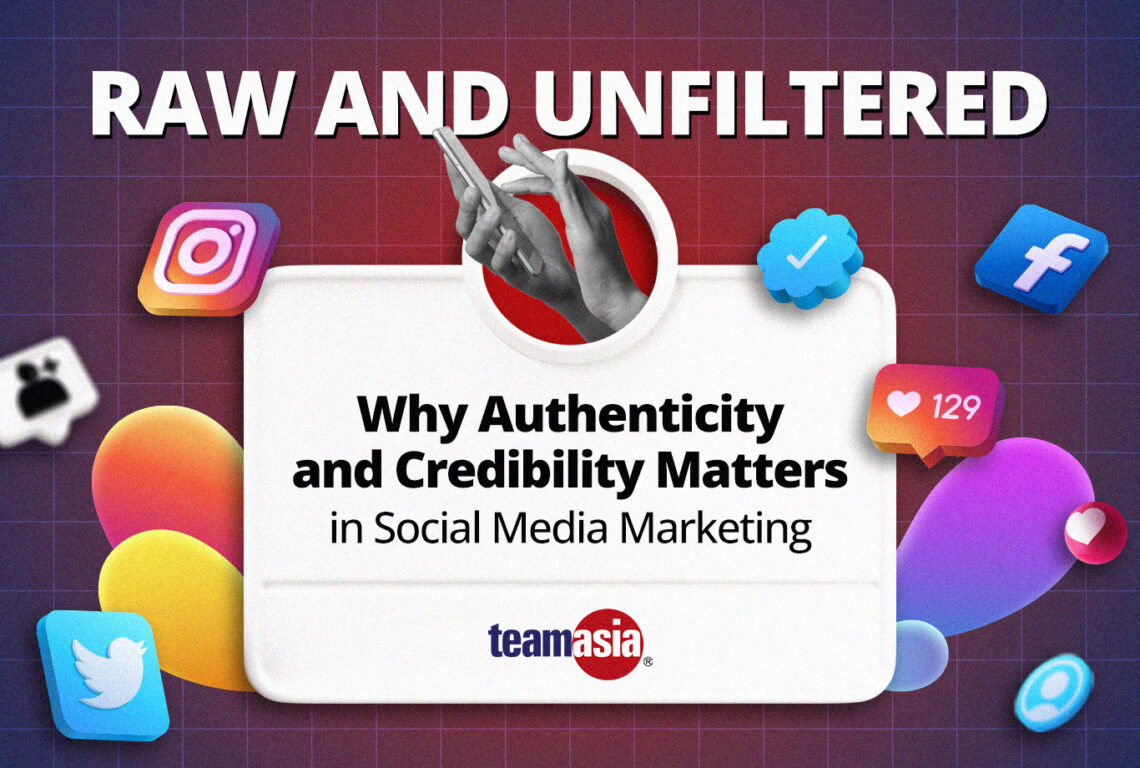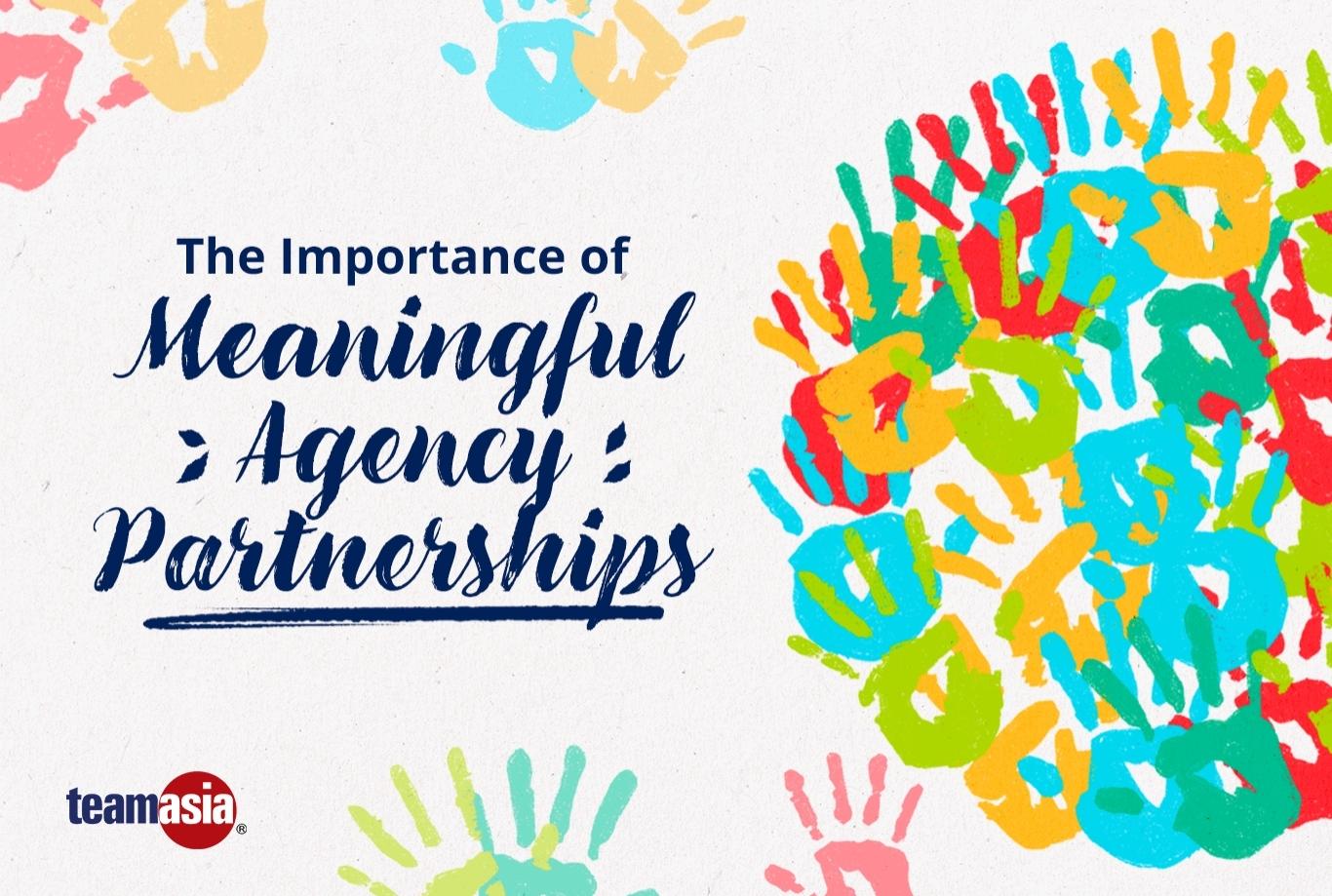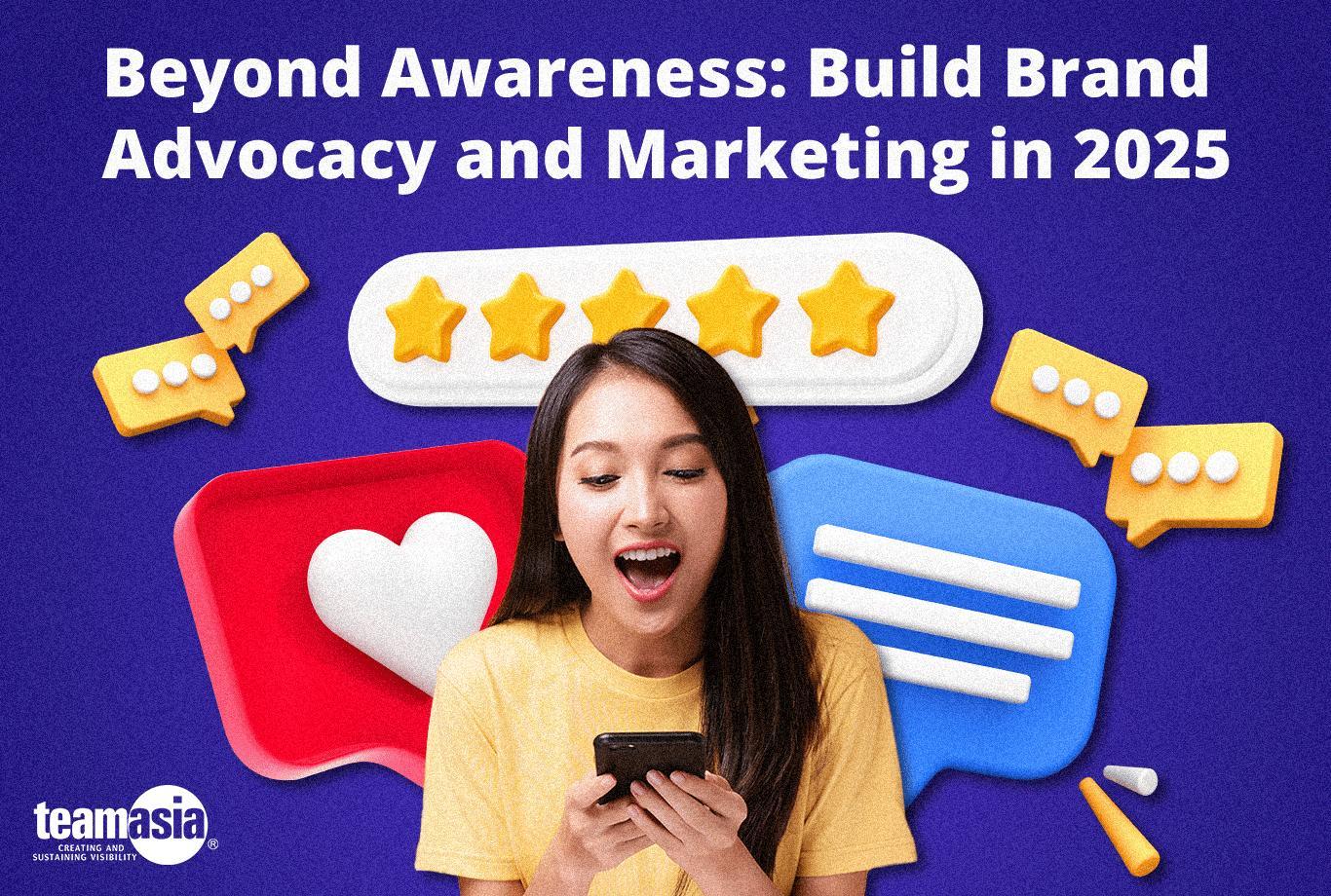Raw and Unfiltered: Why Authenticity and Credibility Matters in Social Media Marketing
By Candice Shayne Leocadio, Digital Manager; and James Michael Chiong, Digital Director

Why do authenticity and credibility matter in social media marketing? Before we cut to the chase, let us take you down memory lane back to the 2010s.
Back then, social media existed merely as a virtual community where ideas come to life and meaningful relationships are formed or fortified. There everyone could freely share snippets of life sans judgment, establish lasting connections, connect with like-minded people about mutual interests, and give visibility to talents that otherwise would have remained faceless for eternity. The experience was human. It was authentic. It was personal. And these are the reasons why the earlier platforms – the precursor to the ones we have now – have taken off into popularity.
While reading this, you might recall what social media was like before sponsored posts and cutesy dance challenges. Tumblr’s microblogging platform welcomed users to creatively exhibit their artistic gifts for the love of fandoms, memes, and subcultures (galaxy backgrounds and mustaches, anyone?). Instagram was less about growing your brand and more about sharing an online photo album of your life in well-polished snapshots. Twitter – before its current reincarnation as the to-go platform for breaking news and scorching hot takes – was a mini online diary where every thought is best written in a few characters. Parody accounts ran rampant long before that but it was easy to distinguish them from the official accounts because the official accounts had bold, blue checkmarks on their profiles.
There was a time when you needed to be a famous personality to get verified on Twitter. The verification badge – commonly depicted by the blue checkmark – is a status symbol indicating the page’s authenticity in social media and notability representing a public figure of interest.
Getting verified on social media takes time – and today’s major social networks have a distinct vetting process. Facebook and Instagram require applicants to show proof of identity or existence of the business represented by the page, and their page meets to be “authentic, unique, complete, and notable” as per their criteria. TikTok’s verification process is not as forthright as Facebook and Instagram as they typically grant it to accounts that have established a solid following on the video platform.
Introducing Twitter Blue: Paying for a Blue Checkmark
Twitter is where things get interesting. Since Tesla and SpaceX owner Elon Musk’s acquisition in October 2022, the platform changed the rules and allowed users to pay for verification via Twitter Blue.
Simply speaking, anyone can get the blue checkmark by registering for Twitter Blue – sans proof of identity – at the price of USD 8 (PHP 459) a month. Musk reassured advertisers via the site’s Spaces feature that Twitter Blue was imposed to combat impersonators and spammers from joining the platform.
Soon after, the widespread verification from Twitter’s new subscription service raised eyebrows in this new chapter of their well-documented grapple with brand safety. Verified accounts that parody famous companies and names grew in hunches and spread spoof messages of a problematic nature. An advertising pullout has also commenced amongst ad agencies and brands due to increasing concerns about promoting their content next to hate speech and impersonations, coupled with Musk’s threats to engage in “thermonuclear name & shame” if they reduce their advertising efforts on the platform. The fallout has also precipitated general unease towards Musk’s Twitter takeover for it could aggregate “problems of misinformation, hate speech, and fake accounts” that have long beleaguered the site.
The Virtue of Authenticity in Social Media
Twitter Blue may have temporarily suspended sign-ups only two days after the relaunch, but by then the damage has already been done.
Being verified on social media requires a certain level of gravitas, and is equated with a verification process that is stringent and exclusive to only the most authentic of brands and personalities. There are numerous advantages that come with a verified badge, which include increased social significance and instant authenticity in social media. You accumulate social proof – other users are likely to have approving perceptions since a platform deems your online presence legitimate and trustworthy. Businesses and individuals, in general, can feel confident in their online interactions because they are able to prove their expertise and establish credibility and trust with their audiences.
Having an authentic social media presence can be a challenge in an online environment where users share carefully created highlights and try to one-up their work in exchange for validation. Twitter Blue’s controversial new feature – one that is almost universally panned by the community for rightful reasons – is contradictory to all the things that made social media a force today. You can buy to get the privilege of donning the blue checkmark just like your favorite celebrity or acclaimed author. Cool, right? But you can’t buy credibility or authenticity in social media because either is earned through a combination of skill, patience, and the will to cultivate real relationships with people who can resonate with your story. In marketing, authenticity in social media is pivotal as the consumers’ appetite for genuine experiences grows. Users are more likely to achieve a better sense of self when they know they support brands that stay true to their voice, are transparent about their values, and exercise accountability in case of mishaps.
Tips on How Marketers Can Achieve Credibility and Authenticity in Social Media
Here are some pointers for marketers on how you can keep it real and build brand credibility on social media:
- Tell a story that will give your target audience a clear picture of who or what the brand is all about. Storytelling has to be clear and relatable to your audiences, and you want to be able to tell stories about what the brand is all about, which people can engage.
- Be transparent. Honesty is an important facet of storytelling. The first step in attaining authenticity in social media is honesty, and doing otherwise can result in a backlash and negative interactions from your audiences.
- Follow the 70/20/10 rule of social media creation and posting. Your social media presence should not bombard feeds with solely hard-sell content. Know the 70/20/10 rule – 70% of your content should be brand-building content by way of informative posts that your audience can benefit from, e.g. do-it-yourself tips, life hacks, infographics, and thought leadership pieces. Another 20% is allotted for curated content sourced from credible industry sources and user-generated content (UGC). The final 10% is dedicated to promotional content that encourages users to take action.
- Create compelling, relevant, and timely content. Social media audiences crave information and content that attends to their needs now. Content strategies have to be aligned with what’s currently appealing to them, to maximize each content that we publish and ensure that we get positive interactions.
- Listen and engage with your audience. Data is very important in getting a deeper pulse of what your audiences want to hear more from you. Without getting data, the continuous churn of content will fall on deaf ears.
- Be the first to take accountability in case something goes wrong. When times get rough, brands that are able to face the audience with honesty and sincerity are the ones that win. There are different ways to address issues, but the most effective is to stand in a position of accountability and a desire for improvement. We are doing business to serve our customers, after all.
Authenticity in the Digital Age
At the end of the day, we log into social media accounts and spend hours on end, to see people in their most authentic selves. Whether these “selves” are versions that they want the online world to see or an honest persona they want to show off to the world – the intention is self-expression. Not deception.
It’s time for a new age of digital marketers to change the game. Regardless of platform updates, new features, new community guidelines, and restrictions that may come around as we continue to evolve the face of social media – audiences need to be able to expect authenticity and honesty from the social media of brands and personalities that we manage. No matter who comes in and shifts the priorities of a social media platform, it’s in its very nature to serve as a venue for people to connect with other people will never change.
It is the right thing to do if we want to steer social media into something that’s healthier for all of us to thrive in.
ABOUT THE AUTHORS
Candice Shayne Leocadio is a Digital Manager, and James Michael Chiong is the Digital Director of TeamAsia. Together they conceptualize and execute digital marketing campaigns that bring brands to the next level of experience. Contact us today!





